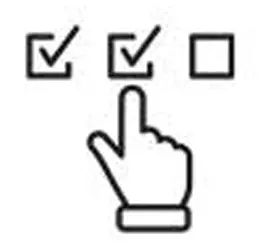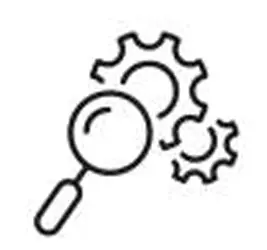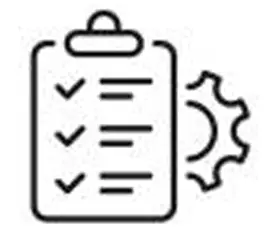유머 분류
5 Robot Vacuums With Lidar Projects For Any Budget
작성자 정보
- Dacia 작성
- 작성일
본문
Robot Vacuums With Lidar Make Cleaning Easier
 A robot vacuum will analyze its surroundings to avoid obstacles and navigate efficiently. This technology is akin to the technology used in aerospace and self-driving cars.
A robot vacuum will analyze its surroundings to avoid obstacles and navigate efficiently. This technology is akin to the technology used in aerospace and self-driving cars.
Simple robots have bump sensors that stop them from scratching the paint on your chair or scratching its legs, but more sophisticated navigation systems like Lidar and SLAM are much better at avoiding unexpected. But this type of technology can increase the cost.
Lidar
The most significant improvement in robot vacuums over the past decade has been lidar, or light detection and ranging. Lidar is sensor sale that emits laser beams and records the time it takes them to return to the sensor, converting the data into precise distance measurements that can be used for mapping. Lidar is a sensor that helps robots navigate and avoid obstacles, particularly in dim light environments.
Even though the latest robotic vacuums are equipped with some form of obstacle detection, some are still struggling with socks, charging cords and other everyday household items that easily get tangled up on the floor. The problem is that a poor obstacle detection system can really affect the cleaning efficiency of a robot vacuum and result in a lot of wasted time when you need to stop the robovac manually and untangle the item that it got stuck on.
The top robot vacuums that use lidar have powerful object detection abilities which will ensure that your floors are kept clean and free of debris and tangles. Additionally, these vacs are less likely to become stuck on furniture legs or other things that are common obstructions in narrow hallways and spaces that are narrow.
Certain robots equipped with lidar come with digital keep-out zones which allow you to create an imaginary boundary on a map to deter your robot from cleaning certain areas of your home or apartment. This can be very helpful in preventing your vac from accidentally vacuuming up the expensive area rug, or the cat litter box.
A robot with lidar can also recognize stairs. While the process of getting a robot up steps isn't easy -- with the exception of the few prototypes in pre-production- many lidar-equipped models are able to make it up and down the steps without difficulties.
Other sensors to keep an eye on include infrared sensors that can detect walls, furniture and other objects that can help the robot navigate. 3D ToF sensors that use reflected infrared to detect and calculate the position of objects and cliff sensors, which alert the vacuum if it gets close to the edge.
Gyroscopes
As opposed to lidar navigation robot vacuum, which utilizes lasers to scan your space and map it out, gyroscopes depend on rotation sensors that keep the robot from crashing into things. These are more common in robots that are budget-friendly and work as a fast-spinning wheels that let the vacuum know its position relative to obstacles. Some models use gyroscopes in order to create a home map. This is helpful for cleaning more thoroughly and ensuring the proper use of the space.
SLAM (Simultaneous Localization and Mapping) is a different popular navigation system for robot vacuums. It's available at a range of prices. This method is used to create a 3D image of your space in order to form an accurate map and navigate through it in a sensible manner. This is a huge improvement over the old bounce-and-bang robots that would simply plow your space, bouncing of whatever they came across until they were done.
Most robots that use SLAM are able to display maps in an app which means you'll be able to see where your cleaners are. You can also create no-go zones based on maps. This is particularly useful for homes with lots of furniture, since it isn't easy to figure out the location of everything without a home map.
While SLAM is effective in most situations, it's not so good in detecting small obstacles, such as wires and cables that might be trapped in the vacuum's brush. This is a significant shortcoming because many robots tend to suck up these items and harm them.
Fortunately, the majority of robots that use SLAM include obstacle detection technology, which includes drop detectors. These sensors help the vac avoid falling down steps and other large differences in floor level that can cause serious damage. Many robots also come with sensors for cliffs, which can be beneficial if you have an animal that can leap over the robot in order to get its water or food dish. These sensors are usually placed on the vac's bumpers. They emit a signal when the vac is within reach of something that could harm it.
Wall Sensors
The ability of a robot vacuum to navigate your home is dependent on combination sensors. A budget model may utilize bump sensors to detect obstacles and a light that rotates to detect walls, but higher-end models are far more advanced, with self-navigation, mapping and self-navigation systems that permit saving maps (with some data retaining or sending the data to a company) and digital keep-out zones to prevent robots from accidentally hitting cables or crashing furniture legs.
Certain robots employ SLAM or simultaneous localization mapping. In essence, they map the room once before they begin cleaning, and then refer back to that map throughout the duration of the task. This makes them a lot more efficient as they know exactly where they've been, and can avoid repeating the same areas of the room. The maps can be shared and [empty] viewed within the robot's app. This is useful if you want to set up specific areas for cleaning or areas that are not allowed to be used.
Another important navigation sensor to look for is a Gyroscope. Gyroscopes rely on spinning wheels or a quickly-rotating beam of light to determine the distance between your robot and obstacles in your home. They then use this data to create a virtual map that the robot can use as it moves around your space. Without this technology, robots may get caught up in things like cords and rugs and can zig-zag across the floor rather than following the edges of rooms.
The best robots have many different obstacles avoidance technology, which may include 3D structured light, 3D ToF (time of flight), monocular or binocular vision-based LiDAR. In general, the more advanced technology you have, the more precise your robot's capabilities will be and the more intuitive its navigation will be. This means that your robot will be able to clean more thoroughly and require less effort and you can also set up zones where it's not permitted to go to safeguard electronics and other valuable items. The newest generation of gyroscopes which are more precise and operate well in dim lighting, can even detect a change in the lighting of your home to aid the robot perceive more clearly.
Optic Sensors
A robot vacuum with lidar can create a 3D map of your surroundings to navigate more effectively and avoid bumping into obstacles. It accomplishes this by sending out a laser beam that bounces off surfaces and returns to the sensor. The sensor then determines the time it takes for the beam to return, [Redirect-302] which translates into distance measurements, allowing the robot to create the room's arrangement.
As opposed to cameras, which are used in some robots to map rooms, lidar is faster and more accurate. A robot that has lidar might have an "no go" zone feature. This lets you set up zones where your robot is not allowed. In our tests it was the Neato Botvac D8 or iRobot Braava 450 were the two top models that use this technology. They have an application that lets you easily create "no-go zones".
The iRobot Duo+ is another fantastic option that utilizes LiDAR and other sensors to build an precise map of your home, which it will then use for navigation. The app lets you manage the mapping process, so you can fine-tune the boundaries of your home as needed.
Other technologies that aid in the robots' navigation include 3D structured light which detects the distance between objects by looking for their reflective properties, and 3D ToF (time of flight), which scans a room to determine the speed and direction of light reflections. Certain robots employ monocular or binocular vision in order to stay clear of objects.
All of these sensors work together to enable robots to stay clear of obstacles in a variety ways, which is why they're such a big part of the reason these machines are so useful to have. It's essential to consider your individual requirements before purchasing a robotic vacuum. Think about how long you'd like to devote to preparing your floors before cleaning, what is lidar navigation robot vacuum obstacles you face in your home and if you want the robot to do more than just vacuum. We suggest that you establish your budget to include an item that has all the features you desire.
 A robot vacuum will analyze its surroundings to avoid obstacles and navigate efficiently. This technology is akin to the technology used in aerospace and self-driving cars.
A robot vacuum will analyze its surroundings to avoid obstacles and navigate efficiently. This technology is akin to the technology used in aerospace and self-driving cars.Simple robots have bump sensors that stop them from scratching the paint on your chair or scratching its legs, but more sophisticated navigation systems like Lidar and SLAM are much better at avoiding unexpected. But this type of technology can increase the cost.
Lidar
The most significant improvement in robot vacuums over the past decade has been lidar, or light detection and ranging. Lidar is sensor sale that emits laser beams and records the time it takes them to return to the sensor, converting the data into precise distance measurements that can be used for mapping. Lidar is a sensor that helps robots navigate and avoid obstacles, particularly in dim light environments.
Even though the latest robotic vacuums are equipped with some form of obstacle detection, some are still struggling with socks, charging cords and other everyday household items that easily get tangled up on the floor. The problem is that a poor obstacle detection system can really affect the cleaning efficiency of a robot vacuum and result in a lot of wasted time when you need to stop the robovac manually and untangle the item that it got stuck on.
The top robot vacuums that use lidar have powerful object detection abilities which will ensure that your floors are kept clean and free of debris and tangles. Additionally, these vacs are less likely to become stuck on furniture legs or other things that are common obstructions in narrow hallways and spaces that are narrow.
Certain robots equipped with lidar come with digital keep-out zones which allow you to create an imaginary boundary on a map to deter your robot from cleaning certain areas of your home or apartment. This can be very helpful in preventing your vac from accidentally vacuuming up the expensive area rug, or the cat litter box.
A robot with lidar can also recognize stairs. While the process of getting a robot up steps isn't easy -- with the exception of the few prototypes in pre-production- many lidar-equipped models are able to make it up and down the steps without difficulties.
Other sensors to keep an eye on include infrared sensors that can detect walls, furniture and other objects that can help the robot navigate. 3D ToF sensors that use reflected infrared to detect and calculate the position of objects and cliff sensors, which alert the vacuum if it gets close to the edge.
Gyroscopes
As opposed to lidar navigation robot vacuum, which utilizes lasers to scan your space and map it out, gyroscopes depend on rotation sensors that keep the robot from crashing into things. These are more common in robots that are budget-friendly and work as a fast-spinning wheels that let the vacuum know its position relative to obstacles. Some models use gyroscopes in order to create a home map. This is helpful for cleaning more thoroughly and ensuring the proper use of the space.
SLAM (Simultaneous Localization and Mapping) is a different popular navigation system for robot vacuums. It's available at a range of prices. This method is used to create a 3D image of your space in order to form an accurate map and navigate through it in a sensible manner. This is a huge improvement over the old bounce-and-bang robots that would simply plow your space, bouncing of whatever they came across until they were done.
Most robots that use SLAM are able to display maps in an app which means you'll be able to see where your cleaners are. You can also create no-go zones based on maps. This is particularly useful for homes with lots of furniture, since it isn't easy to figure out the location of everything without a home map.
While SLAM is effective in most situations, it's not so good in detecting small obstacles, such as wires and cables that might be trapped in the vacuum's brush. This is a significant shortcoming because many robots tend to suck up these items and harm them.
Fortunately, the majority of robots that use SLAM include obstacle detection technology, which includes drop detectors. These sensors help the vac avoid falling down steps and other large differences in floor level that can cause serious damage. Many robots also come with sensors for cliffs, which can be beneficial if you have an animal that can leap over the robot in order to get its water or food dish. These sensors are usually placed on the vac's bumpers. They emit a signal when the vac is within reach of something that could harm it.
Wall Sensors
The ability of a robot vacuum to navigate your home is dependent on combination sensors. A budget model may utilize bump sensors to detect obstacles and a light that rotates to detect walls, but higher-end models are far more advanced, with self-navigation, mapping and self-navigation systems that permit saving maps (with some data retaining or sending the data to a company) and digital keep-out zones to prevent robots from accidentally hitting cables or crashing furniture legs.
Certain robots employ SLAM or simultaneous localization mapping. In essence, they map the room once before they begin cleaning, and then refer back to that map throughout the duration of the task. This makes them a lot more efficient as they know exactly where they've been, and can avoid repeating the same areas of the room. The maps can be shared and [empty] viewed within the robot's app. This is useful if you want to set up specific areas for cleaning or areas that are not allowed to be used.
Another important navigation sensor to look for is a Gyroscope. Gyroscopes rely on spinning wheels or a quickly-rotating beam of light to determine the distance between your robot and obstacles in your home. They then use this data to create a virtual map that the robot can use as it moves around your space. Without this technology, robots may get caught up in things like cords and rugs and can zig-zag across the floor rather than following the edges of rooms.
The best robots have many different obstacles avoidance technology, which may include 3D structured light, 3D ToF (time of flight), monocular or binocular vision-based LiDAR. In general, the more advanced technology you have, the more precise your robot's capabilities will be and the more intuitive its navigation will be. This means that your robot will be able to clean more thoroughly and require less effort and you can also set up zones where it's not permitted to go to safeguard electronics and other valuable items. The newest generation of gyroscopes which are more precise and operate well in dim lighting, can even detect a change in the lighting of your home to aid the robot perceive more clearly.
Optic Sensors
A robot vacuum with lidar can create a 3D map of your surroundings to navigate more effectively and avoid bumping into obstacles. It accomplishes this by sending out a laser beam that bounces off surfaces and returns to the sensor. The sensor then determines the time it takes for the beam to return, [Redirect-302] which translates into distance measurements, allowing the robot to create the room's arrangement.
As opposed to cameras, which are used in some robots to map rooms, lidar is faster and more accurate. A robot that has lidar might have an "no go" zone feature. This lets you set up zones where your robot is not allowed. In our tests it was the Neato Botvac D8 or iRobot Braava 450 were the two top models that use this technology. They have an application that lets you easily create "no-go zones".
The iRobot Duo+ is another fantastic option that utilizes LiDAR and other sensors to build an precise map of your home, which it will then use for navigation. The app lets you manage the mapping process, so you can fine-tune the boundaries of your home as needed.
Other technologies that aid in the robots' navigation include 3D structured light which detects the distance between objects by looking for their reflective properties, and 3D ToF (time of flight), which scans a room to determine the speed and direction of light reflections. Certain robots employ monocular or binocular vision in order to stay clear of objects.
All of these sensors work together to enable robots to stay clear of obstacles in a variety ways, which is why they're such a big part of the reason these machines are so useful to have. It's essential to consider your individual requirements before purchasing a robotic vacuum. Think about how long you'd like to devote to preparing your floors before cleaning, what is lidar navigation robot vacuum obstacles you face in your home and if you want the robot to do more than just vacuum. We suggest that you establish your budget to include an item that has all the features you desire.

관련자료
-
이전
-
다음
댓글 0
등록된 댓글이 없습니다.






